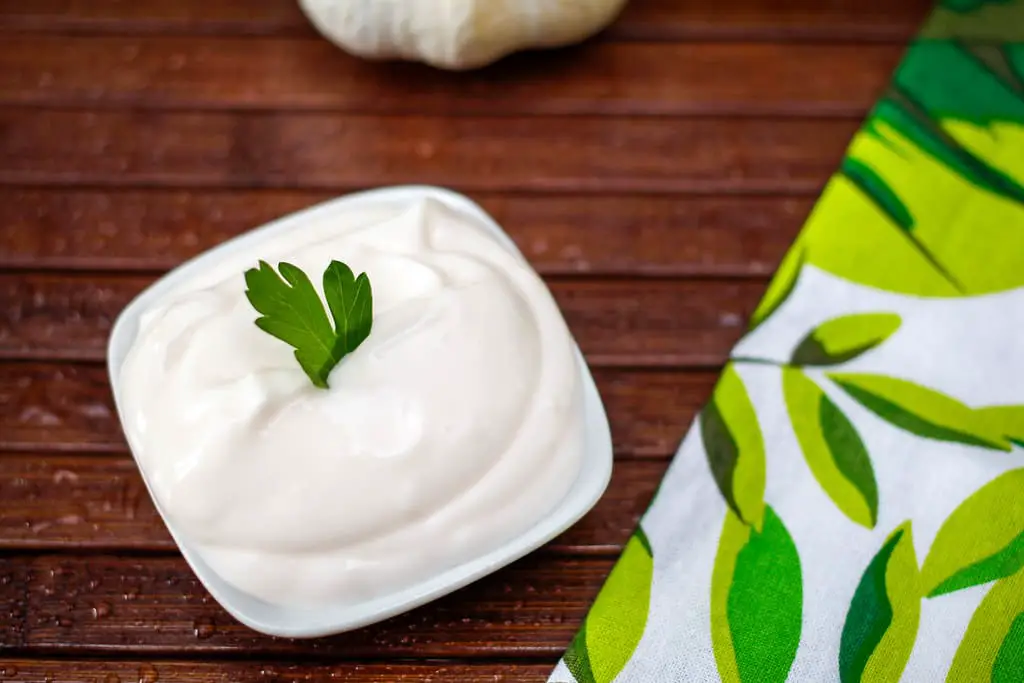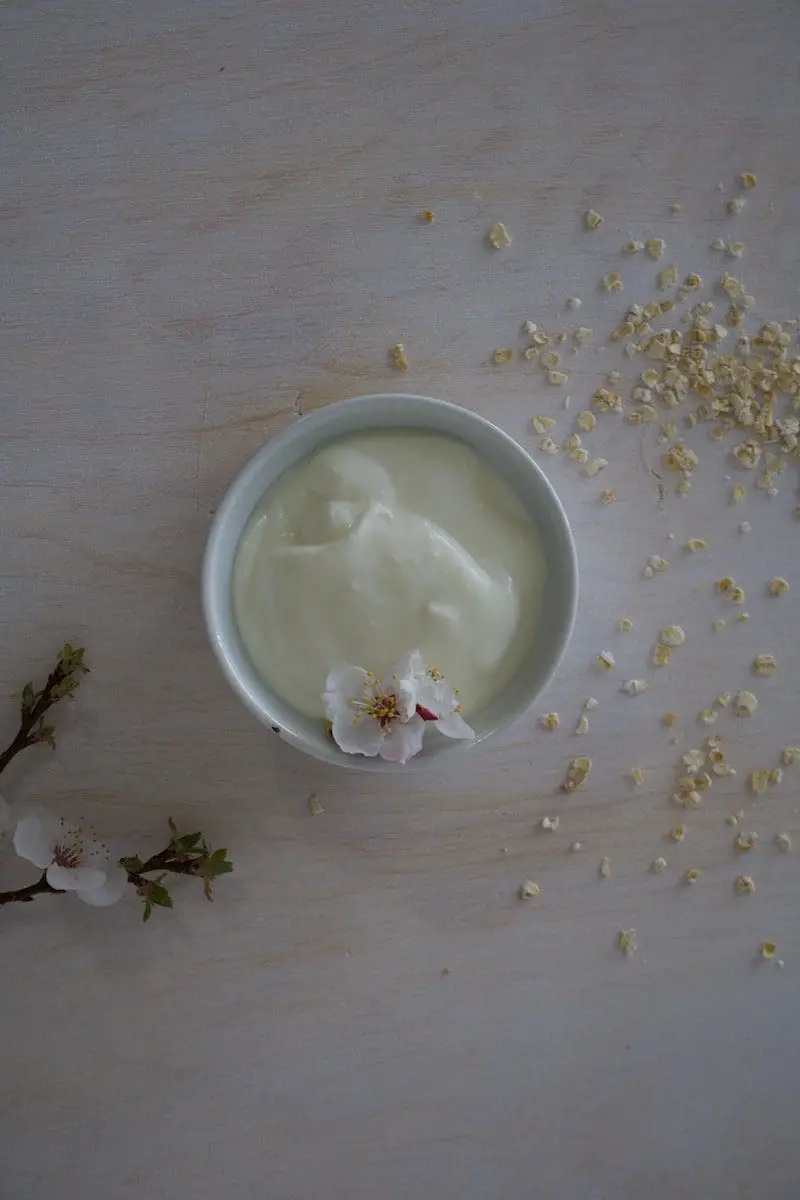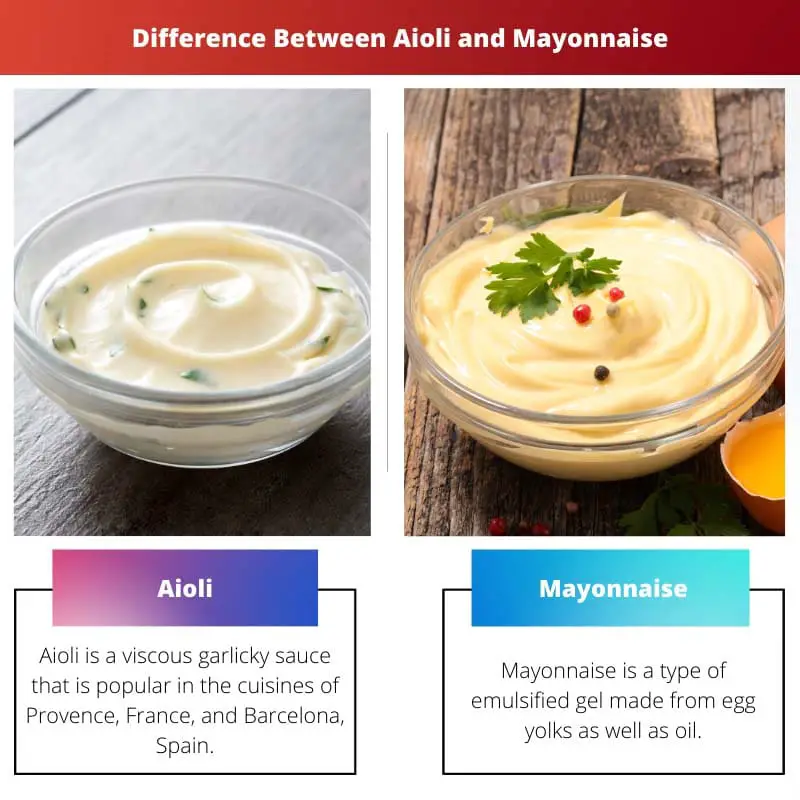Aioli and mayonnaise are both emulsions of oil and egg yolk, but aioli traditionally includes garlic, giving it a distinct flavor. Mayonnaise is a milder condiment without garlic. While they share a similar base, their flavor profiles differ, with aioli having a garlic-infused taste.
Key Takeaways
- Aioli originates from Mediterranean cuisine and traditionally contains garlic, olive oil, and lemon juice, while mayonnaise is a French condiment made from egg yolks, oil, vinegar, or lemon juice.
- Aioli has a strong garlic flavor, whereas mayonnaise has a milder taste and creamy texture.
- Aioli is served with grilled vegetables, seafood, and meats, while mayonnaise is a versatile condiment used in sandwiches, salads and as a base for various sauces.
Aioli vs Mayonnaise
The difference between aioli and mayonnaise is that aioli contains garlic as its principal component, whereas mayonnaise does not. Aioli has a powerful flavor, but normal mayonnaise seems to have a bland flavor. In terms of flavor, aioli is genuinely rather peppery and fresh to taste, whilst mayonnaise is just smooth and buttery.

What is referred to as aioli dressing is simply mayonnaise that has been heavily seasoned with garlic and veggies.
It was just tonnes of garlic mashed with a pestle and mortar and mixed with oil in the region of France, namely in Provence, where aioli (spelled “aoli”) originated, with no yolks or acid included.
However, many modifications made the aioli to be made a bit spicier and fresh. Mayonnaise, known as mayo or sour dressing, is a rich, velvety sauce or dressing that is widely used on hamburgers, patties, salads, club sandwiches, and French fries.
It also serves as the foundation for a variety of other condiments, including marinara sauce, fry sauce, tartar sauce with cheese dressing, remoulade, salsa golf, and rouille.
Comparison Table
| Feature | Aioli | Mayonnaise |
|---|---|---|
| Main Ingredients: | Garlic, olive oil | Egg yolks, oil (canola or vegetable), acid (vinegar or lemon juice) |
| Origin: | Mediterranean, particularly Provençal France | Europe |
| Flavor Profile: | Strong garlic flavor, savory, rich | Tangy, creamy, versatile |
| Texture: | Thicker, denser | Smoother, lighter |
| Color: | Golden yellow, sometimes with flecks of garlic | Off-white or pale yellow |
| Preparation: | Traditionally emulsified with mortar and pestle, can also be made with a blender | Emulsified with a blender or food processor |
| Seasonings: | Often minimal, relying on the natural flavors of garlic and olive oil | Can be flavored with various herbs, spices, and condiments |
| Uses: | Dipping sauce for vegetables, seafood, bread, roasted meats | Sandwiches, salads, burgers, dressings, dips |
| Health Profile: | Higher in unsaturated fats from olive oil | Varies depending on oil used, higher in saturated fats |
| Commercial Availability: | Less common, found in specialty stores or made at home | Widely available in supermarkets and restaurants |
What is Aioli?
Aioli is a Mediterranean condiment with a rich history, renowned for its creamy texture and distinctive flavor profile. It is traditionally made by emulsifying olive oil with garlic and egg yolk, resulting in a smooth and velvety sauce. This culinary delight traces its origins to regions like Provence in France and Catalonia in Spain.
Ingredients and Preparation
- Garlic: A key ingredient that imparts a pungent and aromatic flavor to aioli.
- Olive Oil: High-quality olive oil is used for its rich taste and smooth consistency.
- Egg Yolk: Acts as an emulsifier, contributing to the creamy texture of aioli.
- Salt: Enhances the overall taste by balancing flavors.
The preparation involves finely crushing garlic and combining it with egg yolk. Gradually, olive oil is added while continuously whisking to create a stable emulsion. Salt is then incorporated to season the aioli, resulting in a versatile sauce that pairs well with a variety of dishes.
Variations and Usage
Aioli has evolved over time, and modern variations may include additional ingredients such as lemon juice, mustard, or herbs to enhance its complexity. It serves as a versatile accompaniment to dishes like seafood, grilled vegetables, and meats. Aioli can also be used as a dip for bread or a flavorful spread in sandwiches.

What is Mayonnaise?
Mayonnaise is a versatile condiment that serves as a base for various dressings and sauces. It is an emulsion of oil and egg yolk, stabilized by the presence of an acid and mustard. This popular spread is known for its creamy texture and rich flavor.
Ingredients
- Oil: Typically vegetable oil, but variations may use olive oil or a blend of oils.
- Egg Yolk: The emulsifying agent that helps bind the oil and water content.
- Acid: Usually vinegar or lemon juice, providing a tangy flavor and aiding in emulsion stability.
- Mustard: Acts as an emulsifier and adds flavor.
- Salt and Sugar: Enhance taste and balance flavors.
Preparation
- Emulsification: The key step involves slowly combining oil with egg yolk while whisking vigorously, creating a stable emulsion.
- Acid and Mustard: Incorporating acid and mustard helps maintain the emulsion and adds distinctive flavor elements.
- Seasoning: Salt and sugar are added to taste, contributing to the overall flavor profile.
Variations
- Flavorings: Mayonnaise can be customized with various seasonings, herbs, or spices for unique taste experiences.
- Light or Low-Fat: Some versions reduce oil content for a lighter option.
- Commercial vs. Homemade: While commercial options are widely available, homemade mayonnaise allows for greater control over ingredients and flavor.
Culinary Uses
- Condiment: A popular sandwich spread, burger topping, or dipping sauce for fries.
- Base for Sauces: Serves as a foundation for numerous dressings, dips, and aioli.
- Ingredient in Recipes: Incorporated into salads, coleslaws, and other dishes for creaminess and flavor.

Main Differences Between Aioli and Mayonnaise
- Base Ingredients:
- Mayonnaise: Typically consists of oil, egg yolk, vinegar or lemon juice, and mustard.
- Aioli: Shares a similar base with mayonnaise but includes garlic as a distinctive flavoring element.
- Flavor Profile:
- Mayonnaise: Has a milder and neutral taste.
- Aioli: Known for its pronounced garlic flavor, providing a more robust and savory taste.
- Traditional Origin:
- Mayonnaise: Originated in Western Europe, with variations in ingredients across regions.
- Aioli: Traditional in Mediterranean cuisine, particularly in regions like Provence, and associated with garlic-infused mayonnaise.
- Culinary Usage:
- Mayonnaise: Widely used as a sandwich spread, base for dressings, and in various recipes.
- Aioli: Commonly used as a flavorful dip, spread, or condiment, especially with seafood or vegetables.
- Variations:
- Mayonnaise: Comes in various commercial and homemade versions, with different flavors and fat content.
- Aioli: Often has regional variations with additional ingredients like herbs, and some modern versions may deviate from the traditional garlic emphasis.
- Consistency:
- Mayonnaise: Known for its creamy and smooth texture.
- Aioli: Shares a similar texture with mayonnaise, offering a creamy consistency.




